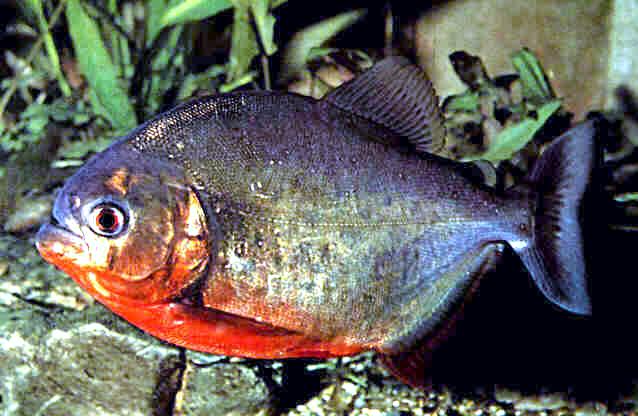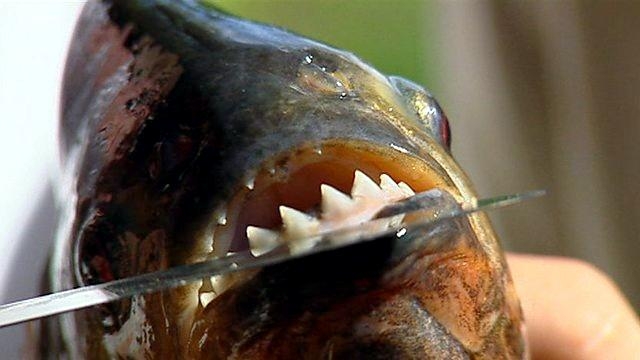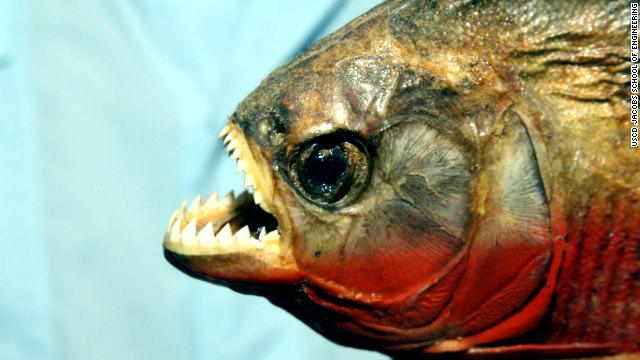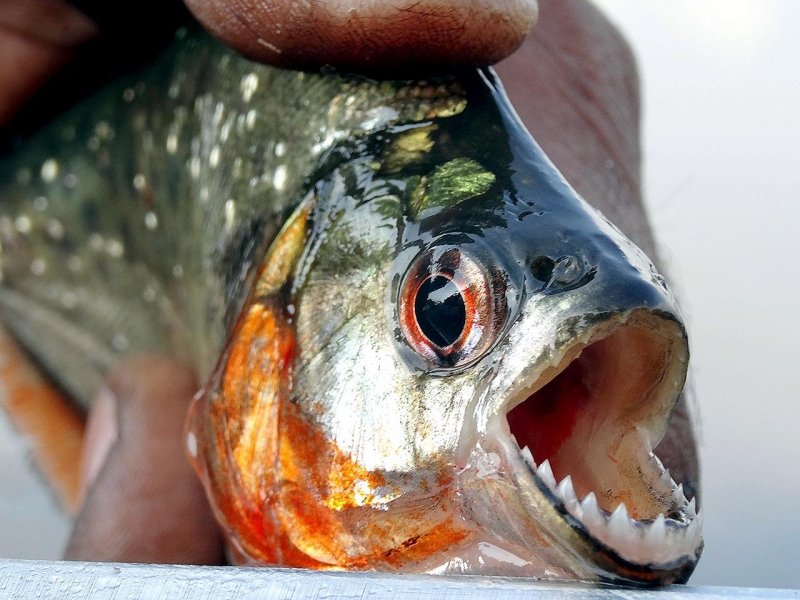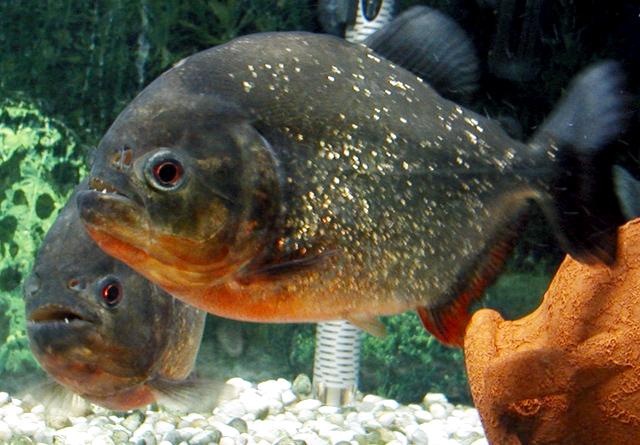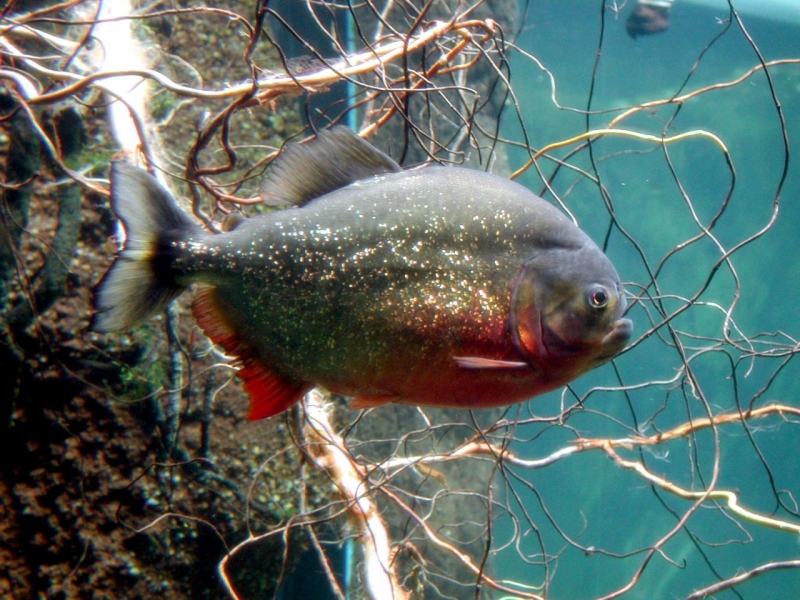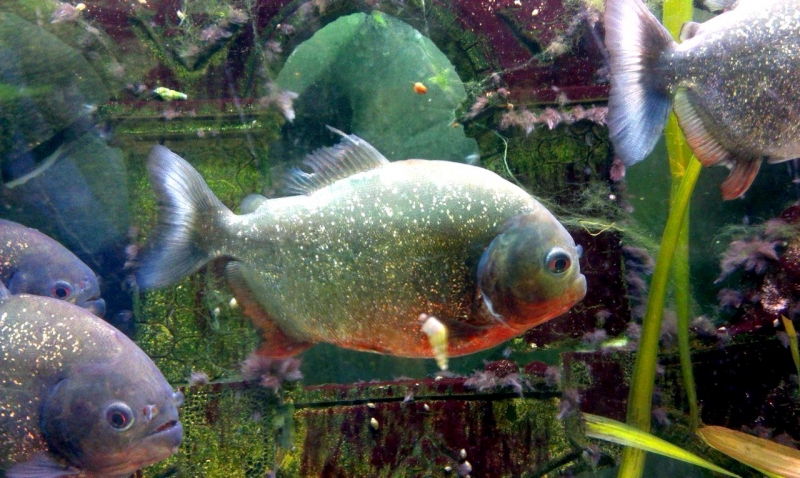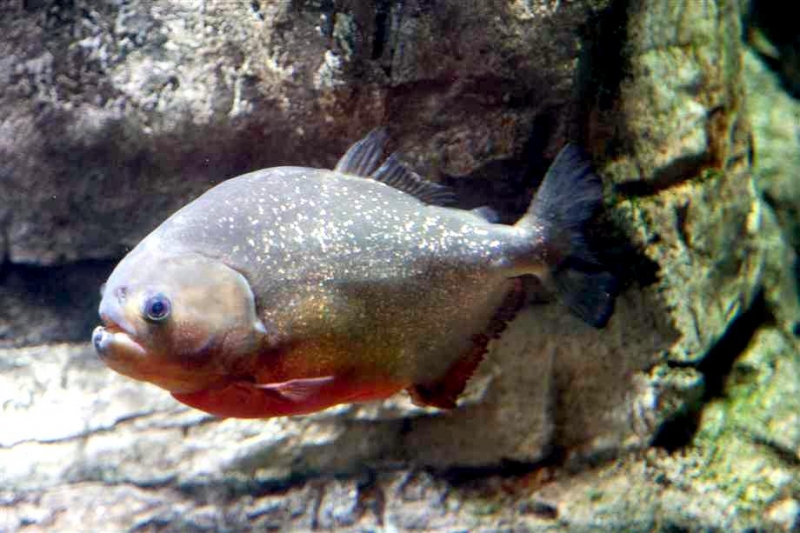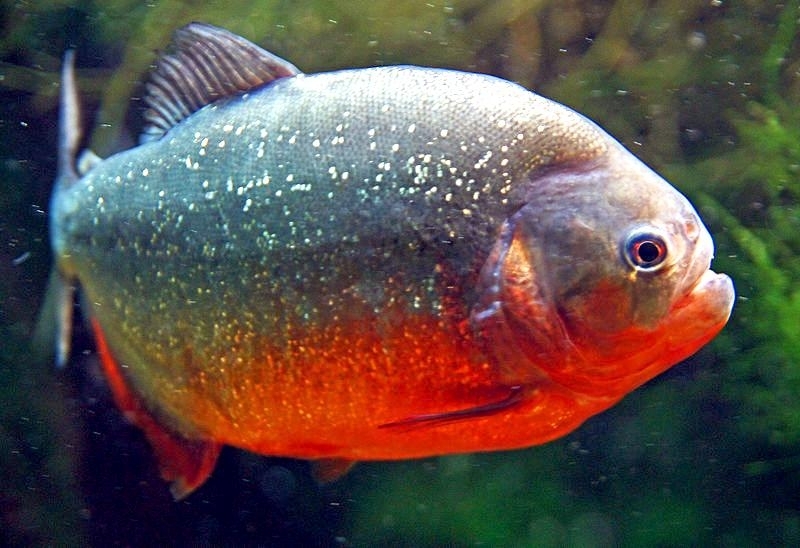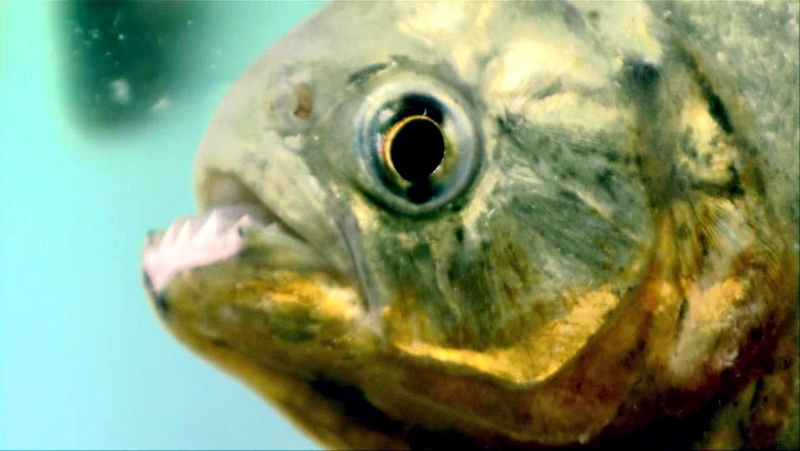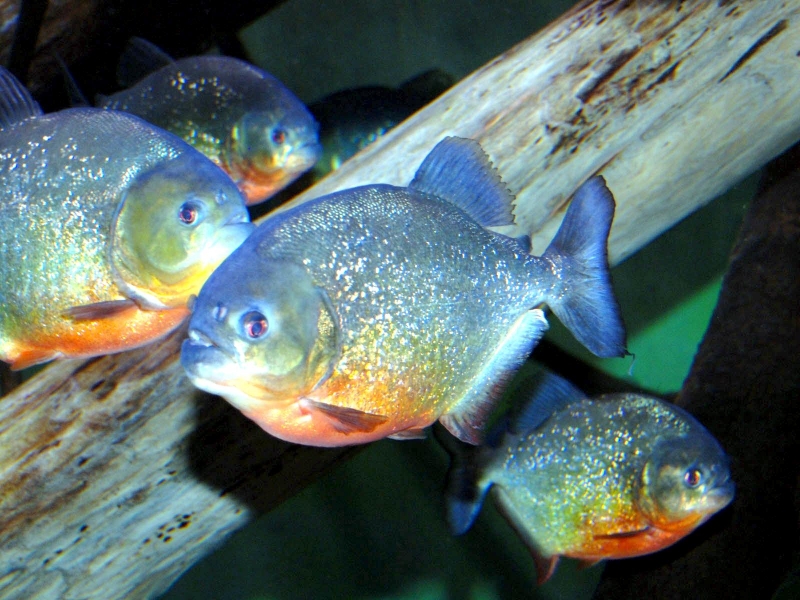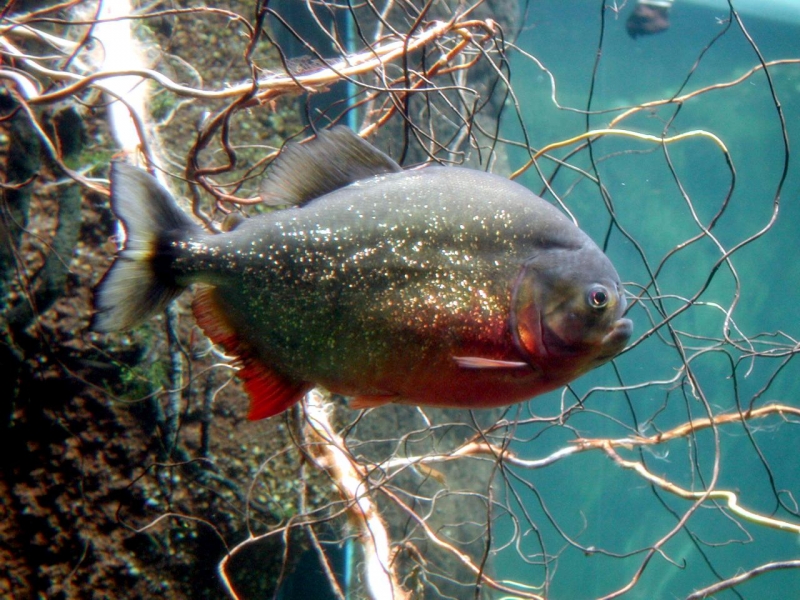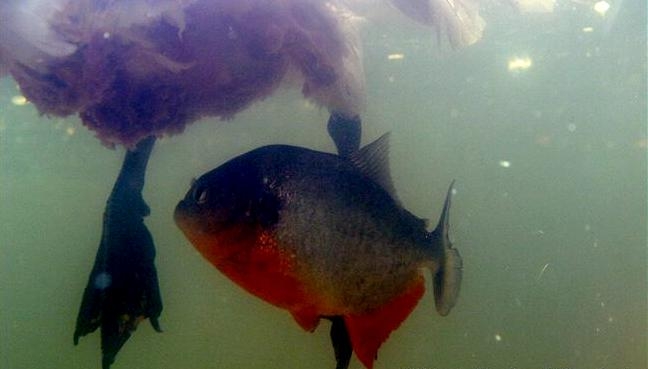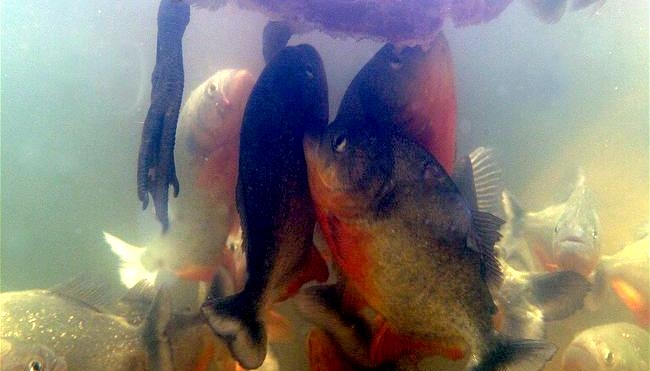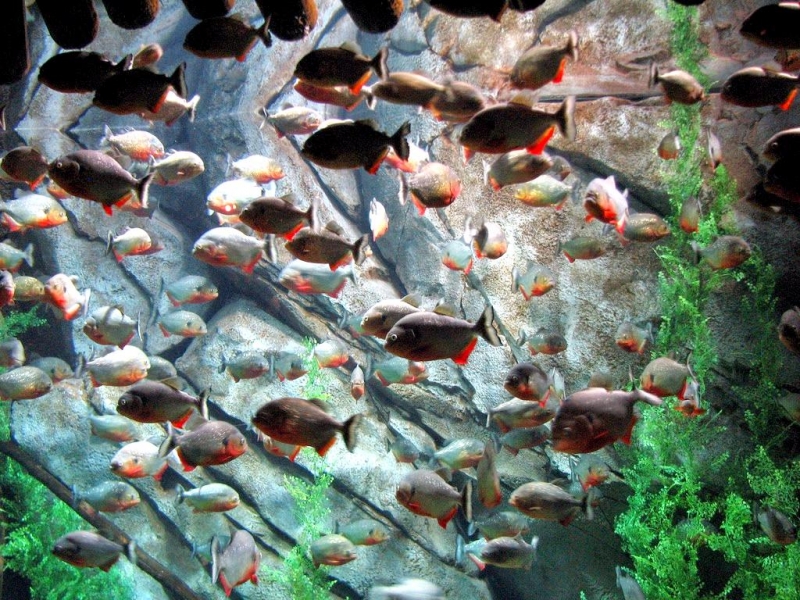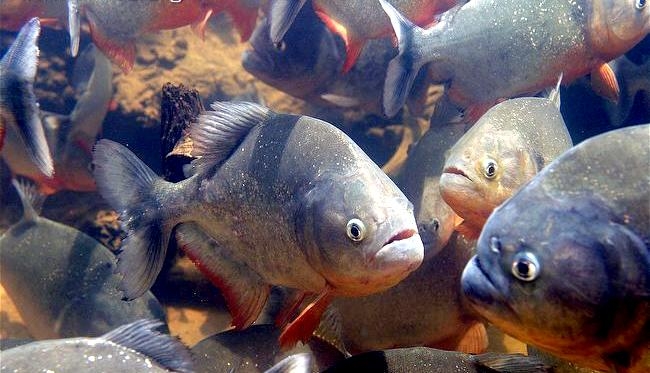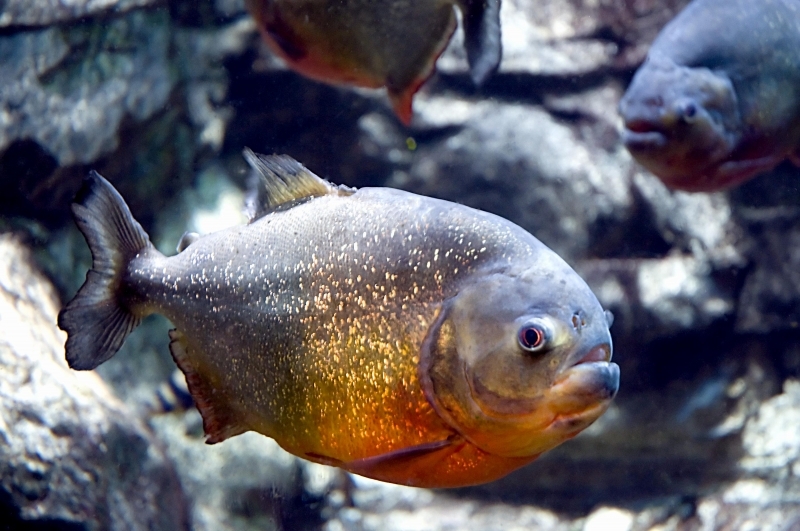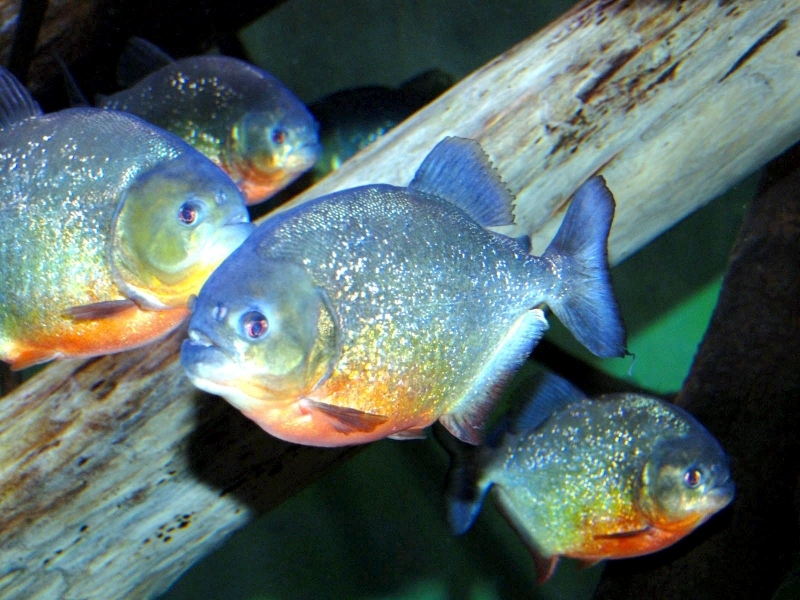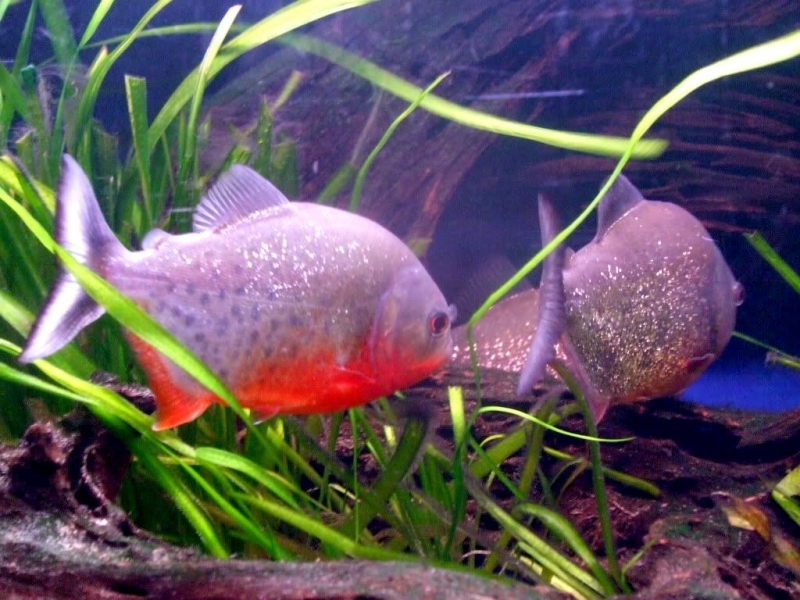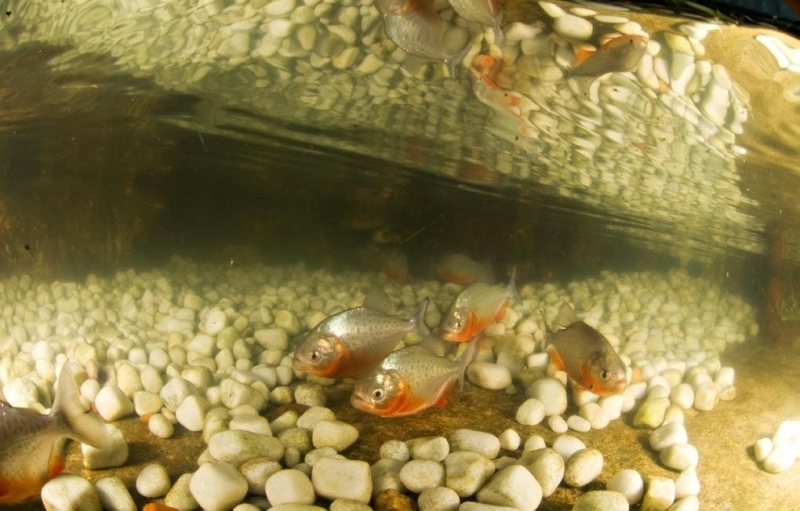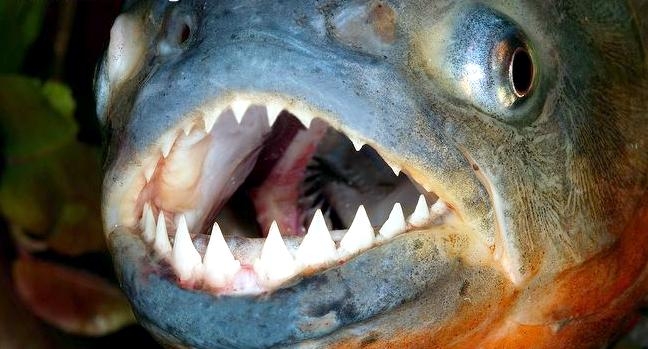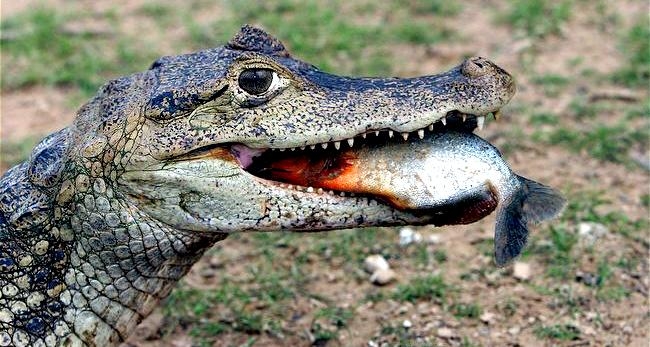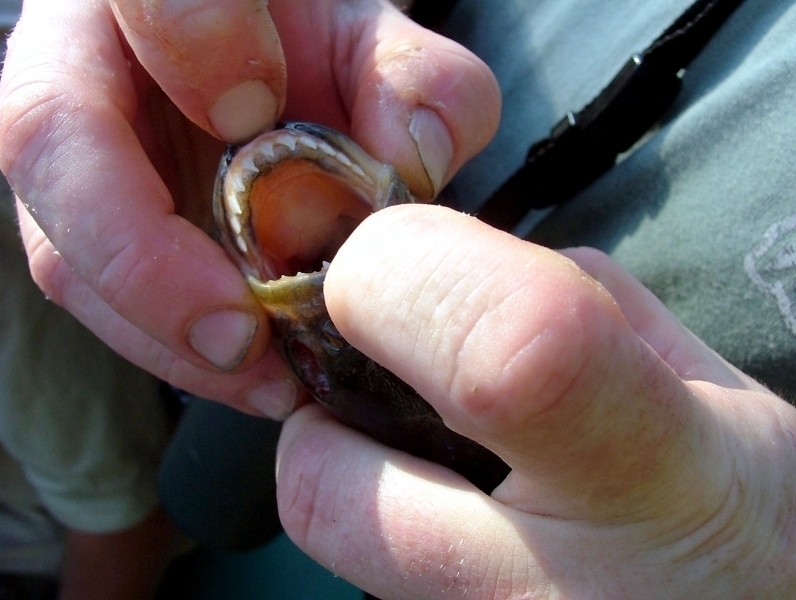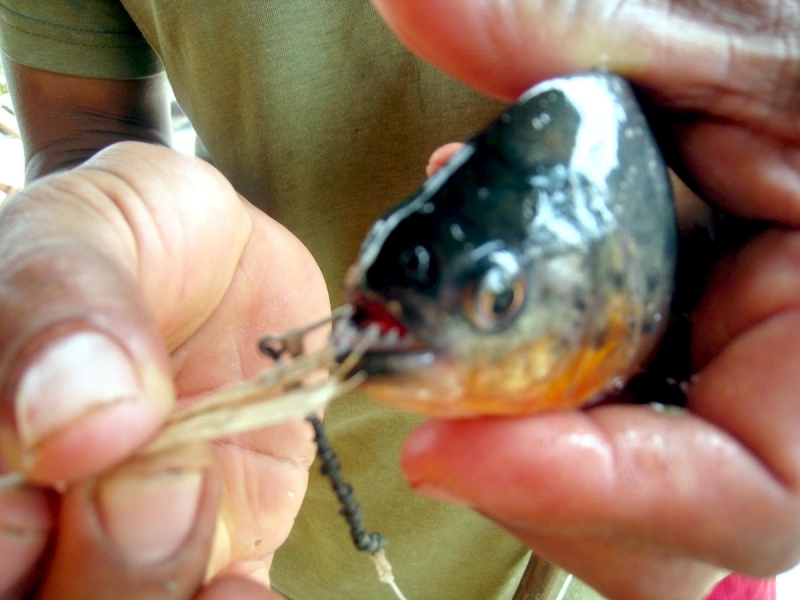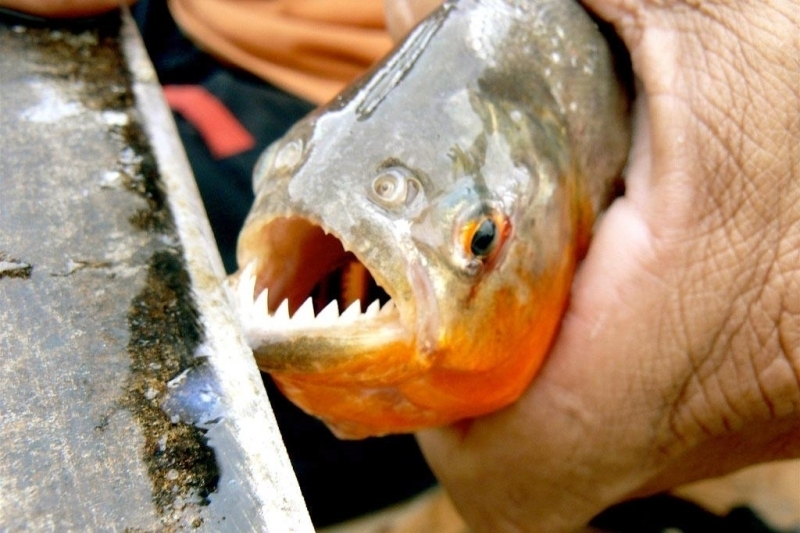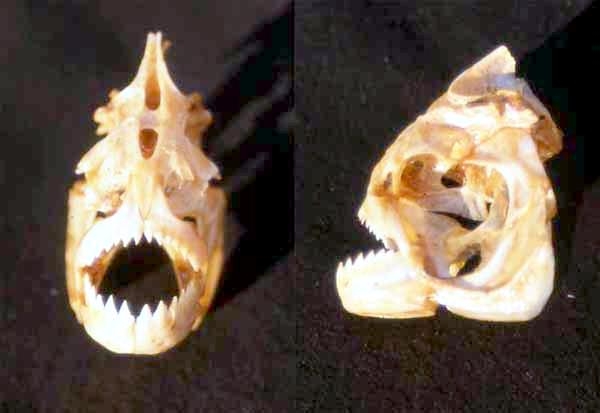“Pygocentrus nattereri”
The Red-bellied Piranha is often feared because of its mythical aggressive and frantic attacks. The Red-bellied Piranha has a reputation as a voracious predator with very sharp teeth and an insatiable appetite, that kills anything that cross its path including humans. The name Piranha means “saw, sawed or serrated”. They are usually found in white water rivers and in some streams and lakes. In certain areas, may also inhabit flooded forests such as those found throughout the extensive Amazon River basin. This predator-fish is widely distributed throughout the South American continent in tropical freshwater rivers in Argentina, Bolivia, Brazil, Colombia, Ecuador, Guyana, Paraguay, Peru, Uruguay & Venezuela. Although variable in appearance, the Red-bellied Piranha gets its name because of the characteristic red belly, which may be a more intense and deep red in males, while the rest of the body is usually gray, speckled with silvery scales and sometimes creamy-brown sides. Dark spots are often visible behind the gills and the anal fin base is usually black, while the pectoral & pelvic fins vary from red to orange. Out-sized jaw muscles allow the Red-bellied Piranha to exert bite force equivalent to 30 times its body-weight, a feat unmatched in the natural world. The muscle complex makes more than 2% of the Red-bellied Piranha’s total body mass. Other animals like the Great White Shark, the Hyena, the Saltwater Crocodile and the American Alligator can deliver more forceful bites, but their crunching power becomes much less impressive when viewed in relation to their overall size and weight. In fact, relative to their size, Red-bellied Piranhas outperform even prehistoric monsters like Tyrannosaurus Rex and Megalodon.
They have a long rhomboid shaped body, short rounded snout and a protruding jaw with very sharp triangular teeth. The Red-bellied Piranha can grow up to a maximum length of 33 centimeters and weigh up to 3.5 kilograms. They live in schools and while not having the behavior of hunting in groups, occasionally Red-bellied Piranhas go into a sort of feeding frenzy where they attack the prey & devour to the bone it in just a few minutes. This particular behavior contributes to the bad reputation of the Red-bellied Piranha, but the “frenzy” usually, is not a random attack and is usually the result of provocation or hunger. Their social organization is not very stable, they live in a constant state of fear and mutual suspicion, cannibalism exists as they eventually attack members of the same species, especially a wounded or sick individual or in times of low food supply. Although they are excellent predators, Red-bellied Piranhas are also hunted by larger animals. Some natural enemies of Red-bellied Piranhas are the Amazon River Dolphin, Black Caiman and the Giant River Otter.
Despite being portrayed as a dangerous & unpredictable predator, the Red-bellied Piranha feeds mainly on fish, aquatic insects and invertebrates such as mollusks & crustaceans at dusk and dawn. It may also feed on any small terrestrial animals it finds, preferring to attack already weakened animals as well as fruits, seeds, algae and aquatic plants. They also feed on carcasses left by larger animals. The triangular sharp teeth make the Red-bellied Piranha extremely efficient grabbing food and the disposition of its powerful jaws & muzzle give the fish the ability to attack & bite with extraordinary force. Not much is known about the reproduction of Red-bellied Piranhas. There are few numbers of observation in the wild for this reason, that we know almost everything about the reproduction is based on observations made in fish tanks. When a couple is ready to spawn, they form a small territory where any fish that approaches will be cast out aggressively. They present a much darker color and their behavior becomes more aggressive & territorial. The Red-bellied Piranha reproduction occurs around April and May during rainy season, usually with a peak over a period of 2 months, which may vary depending on location. The female lays about 600 eggs on the newly submerged vegetation in a dug out nest built by the male.
